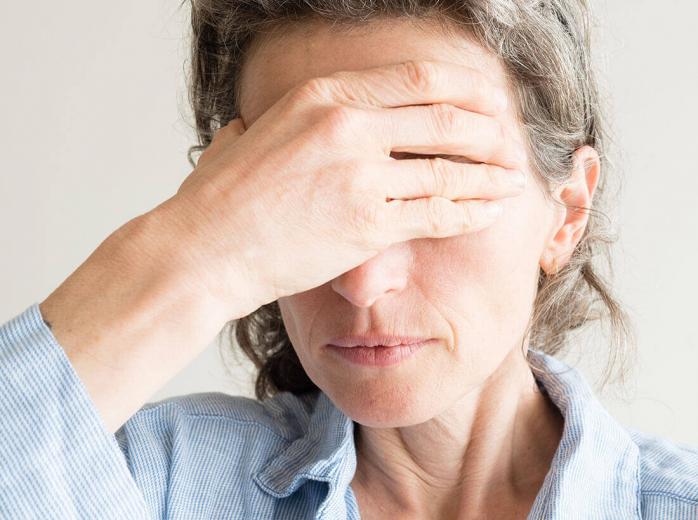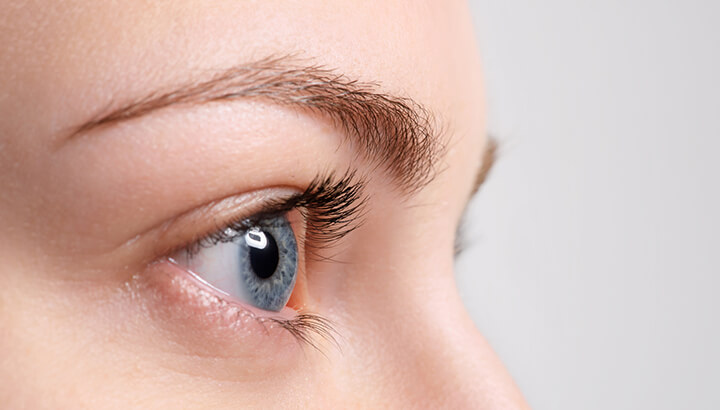Alert today, alive tomorrow! Whole world is dependent on chemicals. People are getting aware about side-effect of chemical cosmetics and turning towards natural beauty & care. So why are waiting for? Prepare before it's too late. Now find all natural cures on Hellodox Health App.
6 Causes of hair loss you didn’t know about and how you can combat this problem
In order to have healthy volume of hair on your head, the rate of hair loss and replacement should be in tandem. With age, your hair growth cycle shows signs of slowing down and factors like age, disease, and hormonal changes among others affect the pace at which an individual hair follicle moves through the 3 phases of the hair cycle. A disruption in your hair cycle can give rise to loss of hair that’s rapid and unexpected. Hair loss or alopecia can affect both men and women.
So what can cause your hair to fall at an alarming rate?
The reasons behind hair loss could be many, but here are 6 major ones:
1. Lack of protein in your diet
When you exclude protein from your diet, your body starts to conserve the protein that it has by altering the growth cycle of your hair. In such cases, your hair enters into the resting stage, resulting in zero hair growth.
In India, 9 out of 10 people are said to suffer from low amounts of protein in their diet, with 91% vegetarians reporting protein deficiency.
2. Iron deficiency
Iron plays a very important role in the transportation of oxygen to the different organs of the body. Lack of iron in your diet (which is the principle reason behind anaemia) can give rise to several health problems including hair loss. Your body attempts to direct oxygen to important organs so as to support their functioning. As a result, your scalp witnesses a low supply of oxygen, which causes hair loss.
3. Vitamin D-3 deficiency
Deficiency of vitamin D-3 gives rise to a type of hair loss called Telogen Effluvium (TE). This is a temporary hair thinning phenomenon that takes place when the all the hair on your scalp enter the resting phase at the same time, subsequently causing you to shed a large amount of hair later on.
4. Smoking
Smoking can also affect the health of your hair, especially the rate at which it falls and the number of strands lost in a day. A research carried out by the Harvard School of Public Health has revealed that smoking can cause a rise in a hormone called dihydrotestosterone (DHT).
An increase in DHT level prevents new hair cells from growing and causes hair follicles to reduce in size with each hair cycle. As a result, the area on your scalp that gets affected by DHT experiences a lack of hair growth.
5. Use of testosterone supplements in gym
Intake of testosterone in the form of supplements and injections to build muscle mass can trigger hair loss in men. This takes place when the testosterone in these supplements gets changed into DHT, thereby affecting your hair loss rate and amount.
6. Past illnesses (dengue, TB and typhoid)
Falling of hair can also be brought on by illnesses such as typhoid, TB and dengue as the hair growth cycle comes to a stop. Hormonal or metabolic stress that is experienced during the course of such diseases may cause hairfall.
What are the treatments available to cure hair loss?
1. Hair transplant
Hair transplant is a minimally invasive surgical technique that transfers hair follicles taken from other parts of your body to the balding area. Known by the name of Follicular Unit Transplantation, this hair loss treatment can help to bring back the natural appearance of a fuller head of hair. Hair follicles are harvested using two procedures- follicular unit extraction and strip harvesting. Procedure can vary from 4-8 hours or more depending on the case.
2. Platelet- Rich Plasma (PRP)
Platelet- Rich Plasma (PRP) is another treatment alternative that can reverse hair loss. It’s a simple non-surgical procedure that lasts about 60-90 minutes. In this form of hair treatment, the patient’s own blood cells, more specifically blood platelets are injected into the scalp. Usually 8 sittings are required with each sitting being 2 weeks apart for better results.
3. Low Level Laser (Light) Therapy (LLLT)
This form of hair therapy utilises light energy of a specific wavelength and threshold to stimulate cellular activity, thereby promoting hair growth. Various controlled clinical tests have revealed its effectiveness in encouraging hair growth in both the genders.
According to contemporary medical studies, loss of sexual desire is more common in women than in men. As many as 3 in 10 women have reduced or limited sexual interest in any kind of sexual activity. While the medical term for this problem is Hypoactive Sexual Desire Disorder (HSDD), it is generally understood as a loss of libido.
There are multiple factors that contribute to this problem including psychiatric or physical disorders, relationship issues, hormonal disorders etc. Let us look at the causes of this disorder at length:
1. Medical disorders:
a) There are conditions such as endometriosis, fibroids and thyroid disorders that may have a negative impact on the sexual drive of a woman.
b) Certain medicines such as antidepressants, oral contraceptives, and medicines that lower blood pressure may also negatively impact the sexual drive in women.
2. Hormonal disorders:
a) Dryness of the vagina and pain during sexual intercourse may affect sexual drive both mentally and physically.
b) After menopause, drop in the count of testosterone hormone also affects sexual drive which can result in loss of libido.
c) With advancing age, the level of androgens decrease, and hence results in a lack of sexual desire.
3. Lifestyle disorders:
a) In some of the cases, lack of emotional support in a relationship plays a significant role in the loss of libido. Post baby 'coolness' may also act as a driving force for loss in libido.
b) In today's era, changing lifestyle is drastically affecting our lives. Following an unhealthy lifestyle may result in increased weight that may affect self-image, and indirectly may also affect the sexual desire.
c) Stress and job, family pressure and exhaustion may also influence sexual desire of a woman.
4. Psychological factors
a) Increasing cases of depression, anxiety, frustration, stress is also an important cause of loss of libido in the contemporary society.
b) After childbirth, new moms tend to suffer from lack of sleep, insufficient lubrication of the vagina and exhaustion, which may affect her sexual desire.
The first and foremost step towards dealing with it is to make your partner understand your problem. Then, it is important to consult a doctor to find out the underlying cause, thereafter, treatment of the cause can normalize the condition. Since there are multiple causes of the problem, there are different ways by which the loss of libido can be easily managed and treated. Some of them are discussed below:
1. Treatment of hormonal disorders: The doctors will suitably treat problems like thyroids or recommend surgical treatment for fibroids to manage HSSD.
2. Change in medications: Since some of the medications are responsible for the lack of libido, the doctors will replace the medications to reverse this lack.
3. Addressing the psychological factors: Your doctor will either arrange for suitable psychiatric sessions or ask your partner to coordinate mutually.
4. Sex therapy/Relationship counseling or Testosterone therapy: While sex therapy or relationship counseling brings back the interest by effectively counseling the individual, Testosterone therapy involves off-label usage of testosterone hormone since it is not recommended by FDA.
There could be various reasons of premature ejaculation ranging from chemical to psychological and physiological issues. It is believed that Taoist’s have been practicing the method of natural ejaculation techniques for over thousand years. Taoist’s techniques tend to fetch great results in strengthening the body, enjoying happier and healthier sex life. This technique helps a man to delay ejaculation fic any dysfunction of the nervous system, strengthen the parasympathetic nerve etc. The Taoist’s technique helps to maximize the erection time and control the urge to ejaculate.
Technique summary:
This technique is referred to as the technique number 70 and is applicable for men of age under 45. The typical symptoms include premature ejaculation within a time of under fifteen minutes. The possible causes of this disorder include over sensitivity, performance anxiety, stress, fear of intimacy, excessive masturbation etc.
How does the Taoist's natural ejaculation technique work?
This technique combines the breathing and meditative energy of the body to stop premature ejaculation. It helps to strengthen the parasympathetic nerve which in turn keeps the ejaculation valve shut for a longer duration. It assists the body to keep the erection going better than before. To ensure a healthy erection the sexual motoring nerve should function normally and the testosterone hormone should keep burning. Any deviation in either of the two functions can lead to premature ejaculation.
What is the expected result?
The Taoist’s natural ejaculation technique increases the energy flow to the penis. The sexual energy that is generated re-circulates throughout the body- especially around the spinal cord and the brain. The central nervous system gets aligned with the parasympathetic nerve and the simulation tightens the ejaculation valve.
How to perform the steps?
The first step is to soften the body and keep the breathing normal. The eyes should be loosely closed and the tongue should be held against the palate. The mind should be focused in between the eyebrows.
The next step is to inhale after two to five seconds interval till the abdomen expands considerably. The mind should be focussed at the center of the body directly towards the navel.
Now the breath should be on hold and the abdomen should be contracted by breathing inward. This helps to create pressure towards the prostate gland and the bladder. The mental focus should be near the prostate area. This step mainly focuses on holding the breath and applying pressure at the prostate and the bladder at the same time. The pressure blocks the penis sensitivity thereby helping a person maintain the erectile position of the penis for a longer duration.
The anus should be contracted and breath should be exhaled from the mouth. The concentration should be focused on the forehead region till hot energy is felt from the prostate.
The body has multiple chemicals called hormones, which regulate many of its functions. Increased or decreased levels of these hormones affect various functions including metabolism, growth and sexual functions. Thyroxin produced by the thyroid (situated in the front of the neck) is one such hormone, which has a significant role to play in metabolism.
Graves’ disease is one of the main causes of hyperthyroidism, where there is excessive production of thyroid hormones. Graves’ disease is an autoimmune disorder, wherein the body reacts against its own tissues. It is very common in women than men, especially after 20 years of age. Family history also has a strong correlation in developing Graves’ disease. The high levels of thyroid hormone increase the rate of metabolism, thereby altering weight, mental energy levels, physical stamina, and also mood.
Thyroid hormone is related to metabolism and more amount of it lead to higher metabolism. This causes the following symptoms.
1. Intolerance to heat
2. Excessive sweating
3 .Nervousness and anxiety
4. Inability sleep, as the mind is always excited
5. Increased appetite (sometimes despite weight loss) due to higher metabolism
6. Irregular menstrual cycles
7. Palpitations (rapid, loud heartbeat)
8. Irregular heartbeats (tachyarrhythmia)
9. Fine tremors of the extended arms
10. Breast enlargement in men, known as gynecomastia
11. Extreme moodiness, causing irritability and anger
12. Inability to focus and concentrate
13. General fatigue and shortness of breath with any exertion
14. Increased frequency of bowel movements
In addition, the eye symptoms are quite diagnostic including:
-Protrusion of the eyes (exophthalmos), giving an impression that they are going to fall out
-Double vision
-Excessive tearing
-Increased irritation in the eyes
Diagnosis: The first symptom would be the presence of an enlarged thyroid gland (front of the neck above the collarbone), and the some of the above symptoms would be present.
In addition, tests to check for thyroid gland functioning including T3 and T4 levels would reveal increased amounts of hormone in the blood stream.
As a confirmatory test, the radioactive iodine uptake test also is done, which will indicate increased uptake by the thyroid gland. This indicates that the gland is functioning at an increased pace and requires additional iodine for the production of thyroid hormones.
Treatment: There are two approaches to it, one to control the symptoms and the other to control the thyroid gland per se.
1. Beta blockers are very useful in controlling rapid heart rate and anxiety.
2. Prednisone may be used to control eye irritation and swelling
3. Antithyroid drugs are used to control the production of thyroid
4. Radioactive iodine is given orally to control excessive thyroid production
5. In severe cases, thyroid gland may be surgically removed partially or completely
Graves’ disease is not life-threatening and once symptoms are controlled, the patient’s quality of life improves drastically.
All of us agree that healthy habits are absolutely necessary for a high quality of life. It is another story that whether we put them into practice or not. These healthy habits have to be cultivated since childhood for keeping vital organs like eyes in a perfect condition. One's quality of life is closely linked to how well one see and one can take steps now to take care of one's eyes and preserve vision well into old age.
Keep Your Eyesight Sharp and protect your eyesight with the five tips listed below
Maintain a balanced and healthy diet. It has been scientifically proven that some foods can boost eye health and delay age-related eye changes. One must include eye-boosting vitamins and minerals in diet, such as lutein and zeaxanthin, vitamin C, Vitamin E; zinc and omega-3 fatty acids to keep one's eyes in best shape. Broccoli, corn, squash, peppers, spinach and kale are the best source for zeaxanthin and lutein whereas citrus fruits, melons, tomatoes and broccoli are great source of Vitamin C. Vitamin E can be found in legumes, wheat germ, nuts and seeds while one can get zinc in found in whole grains. Salmon is a great source of omega-3.
Reduce Exposure in the sun: Sun's ultraviolet rays can increase the risk of developing cataracts, which is most common cause of age-related vision loss in adults. It is very essential to take precautions to shield one's eyes from the sun. One should wear UV protective eyewear or wide brimmed floppy hat for protection from sun.
Quit Smoking: Smoking is not only bad for heart and lungs, it can also damage eyesight. Cigarette smokers are at greater risk of developing both macular degeneration and Glaucoma.
Regular Exercise: Regular exercise keeps waistline trim and eyes sharp. Latest studies have shown that those who led an active lifestyle were seventy percent less likely to develop macular degeneration.
Go for Annual Eye Examination: Regular examination of eyes can give a surprising number of clues about ones overall health. Ophthalmologist can detect a broad set of problems ranging from hypertension to diabetes by doing a thorough examination of ones eye.
One only have one pair of eyes, so it is absolutely necessary to take the proper steps to care for them. By nourishing one's body with the right foods, getting regular exercise and going in for regular eye exams, one can keep vision sharp at any age.













